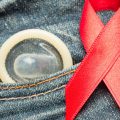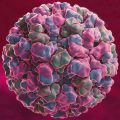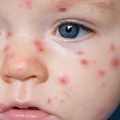What are viruses and what their dangers?
When it comes to deadly and dangerous microbes, immediately to mind viruses, that so much frightened us medics. Really, Information about these microbes are not far-fetched: viruses can cause a lot of dangerous diseases, including bird flu, SPID, atipichnaya pneumonia, except and etc..
The most common viral diseases - respiratory infections (ORVI), that at least once in his life he had been ill, probably, everyone. At the moment, there are more than 300 different virus subtypes, that belong to the five main groups and cause respiratory disease: influenza viruses, paragrippa, rhinoviruses, adenovirusı, reoviruses. All of these viruses are contagious, they are transferred by droplet infection and are resistant to antibiotics.
Viruses can attack almost all living organisms: bacteria, plants, animals, man. There are several species of viruses, that can affect a person at a certain set of circumstances. This is all the notorious bird flu and HIV, the primary form of which was discovered in monkeys.
viruses (from the Latin virus - poison) - it is the smallest non-cellular particles, which are intracellular parasites. Virus, embedding into living cells, changes its genetic structure, and "toggles" own cage on the synthesis of viral particles (virion), which in turn are beginning to infect other cells in the body, which leads to the emergence of viral disease.
Science still can not determine the nature of the virus until the end. In fact, they are not living beings, are not able to independently detect and process food, but getting into the cage, begin to proliferate and multiply. In other words, viruses outside the cell can not exist, but they have their own genetic material, with effect at the confluence of certain favorable conditions in the host cell.
What are viruses?
The different nature of viruses, the degree of organ damage and human systems, the degree of aggression of viruses in the human body to cause symptoms and severity of viral disease. The most common viruses:
respiratory viruses (ORVI) - mainly affect airway epithelium. Along with the symptoms of the respiratory tract (nasal congestion, sore throat, cough) showing signs of intoxication: pain in joints and muscles, temperature, weakness. Generally favorable outcome respiratory infections, but in the presence and absence of chronic pathology necessary treatment, complications may develop - cerebral edema, pneumonia, sinusitis, etc..
Children's airborne viruses (rubella, measles, chickenpox) - severe infections, mainly manifested in children. In adults, these diseases are more severe and can cause serious complications..
Herpes - the virus affects most of the entire population of the world. The symptoms of this viral infection depend on the type of virus and the state of the person's immune system.: virus 1 and 2 type characterized by blistering eruptions on the face, virus 3 type is manifested by the appearance of such rashes all over the body, 4 type causes infectious mononucleosis with severe complications.
Viral hepatitis - a group of diseases, affecting the liver. Certain types of viruses can cause chronic illness, and later - to cirrhosis or liver cancer.
HIV infection - proceeds in this way, that the virus manages to escape the attack of the protective immune system. Several years after infection, the body's resistance to a number of infections decreases, the risk of cancerous growths increases - AIDS develops. The disease hits the blood cells, nervous, cardiovascular, endocrine and musculoskeletal system. AIDS is quickly fatal if left untreated.
Rabies virus - infection, fatal. AT 99% cases of rabies are transmitted to humans through pets.
Is it possible to cure the virus?
The difficulty in treating viruses is, that they are intracellular parasites and it is not so easy to get rid of them. There is currently no cure, which could block or kill viruses in the infected organism. Moreover, even the theoretical possibility of the appearance of such drugs in the foreseeable future is not visible at all..
With diseases, caused by viruses, only the immune system can handle, which will distinguish between infected cells and destroy them, preventing them from spreading in the body. The body of a healthy person recognizes and destroys more than three thousand infected cells every second., tk. the immune system protects the body against many different types of viruses around the clock.
Methods are used to treat viral diseases, which could stimulate the body's defenses: eg, vaccination, correct diet, taking herbal immunostimulants.
Disorders of the human immune system, in which the body cannot effectively recognize cells with alien genetics, lead to a massive increase in affected cells and the development of infectious and viral diseases. Therefore, long-term and severe viral diseases are considered precancerous conditions..































